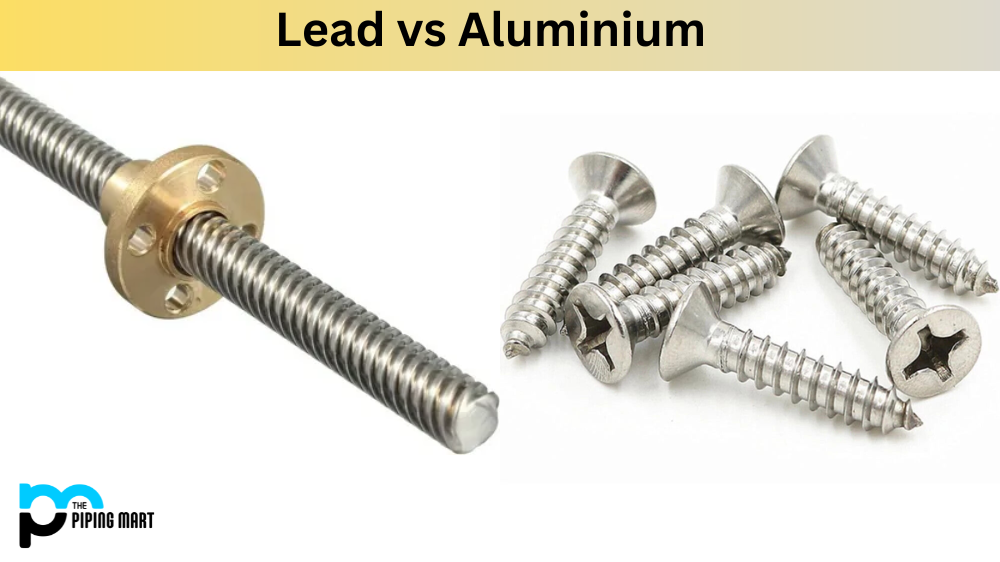Lead and aluminium are the most commonly used metals in various industries. Although both are versatile and offer unique characteristics, they have distinct differences that make them better or worse than each other in different applications. In this blog post, we will dive into the properties and benefits of lead and aluminium and compare them to see which is better in which scenario.
What is Lead?
Lead is a heavy metal that is found naturally in the environment. It has been used for centuries in various applications, including plumbing, batteries, and ammunition. While lead is considered to be a safe material when used properly, it can be harmful to human health if it is inhaled or ingested. Lead exposure has been linked to various health problems, including cancer, reproductive and neurological problems.
What is Aluminium?
Aluminium is a light metal that is found naturally in the environment. It has been used for centuries in various applications, including cookware, foil, and beverage cans. While aluminium is considered to be a safe material when used properly, it can be harmful to human health if it is inhaled or ingested. Aluminium exposure has been linked to various health problems, including cancer, reproductive and neurological problems.
Difference Between Lead and Aluminium
There are a few critical differences between lead and aluminium. Lead is heavier than aluminium, meaning it is more dense and will sink in water. Aluminium is also more reactive than lead, which will corrode more easily. Additionally, lead is considered more toxic than aluminium when inhaled or ingested.
Lead Properties
Lead is a dense, malleable, and ductile metal with a low melting and high boiling point. It is highly corrosion-resistant, making it ideal for applications where exposure to harsh chemicals is likely. Lead also has excellent sound-deadening and radiation-absorbing properties, making it perfect for shielding applications. Finally, lead is highly resistant to fatigue, which means it can withstand repeated stress and maintain its structural integrity.
Aluminium Properties
Aluminium is also a highly versatile metal that is lightweight, malleable and has good thermal and electrical conductivity. Aluminium is highly corrosion resistant, making it ideal for outdoor applications. It is also highly reflective, making it an excellent choice for lighting fixtures and reflective surfaces. Finally, aluminium is recyclable, which makes it an eco-friendly choice for various applications.
Lead vs Aluminum in Construction
When it comes to construction, both lead and aluminium have unique benefits. Lead is highly durable and can withstand repeated stress, making it an excellent choice for roofing, flashing, and pipe insulation. However, lead is more expensive than aluminium and requires specialized tools and equipment. On the other hand, aluminium is highly versatile and is used in various construction applications, such as window frames, siding, and gutters. Aluminium is also easier to work with than lead and is more cost-effective.
Lead vs Aluminum in Electrical Applications
In the electrical industry, both lead and aluminium are used extensively. Lead is highly conductive and has excellent shielding properties, making it ideal for electrical wiring and cables. However, lead is also toxic and can harm human health and the environment. Aluminium, on the other hand, is also highly conductive and is a more eco-friendly choice for electrical applications. Additionally, aluminium is less expensive than lead, making it an affordable choice.
Lead Exposure
Lead exposure can occur through inhalation or ingestion. When inhaled, lead can enter the bloodstream and cause damage to the brain and other organs. Ingesting lead can also be harmful, as it can enter the bloodstream and cause damage to the brain and other organs. Lead poisoning occurs when there is too much lead in the body. Symptoms of lead poisoning include abdominal pain, constipation, headaches, irritability, and memory loss.
Aluminium Exposure
Aluminium exposure can occur through inhalation or ingestion. When aluminium is inhaled, it can enter the bloodstream and cause damage to the brain and other organs. Ingesting aluminium can also be harmful, as it can enter the bloodstream and cause damage to the brain and other organs.
Conclusion
In conclusion, lead and aluminium have unique properties that make them better for certain applications than others. Lead is highly durable and has excellent shielding properties, making it ideal for construction and electrical applications. However, lead is also toxic and is more expensive than aluminium. Aluminium, on the other hand, is lightweight, easy to work with, and a more cost-effective choice. Ultimately, the choice between lead and aluminium will depend on the specific application and the intended use.

Abhishek is a seasoned blogger and industry expert, sharing his insights and knowledge on various topics. With his research, Abhishek offers valuable insights and tips for professionals and enthusiasts. Follow him for expert advice on the latest trends and developments in the metal industry.




